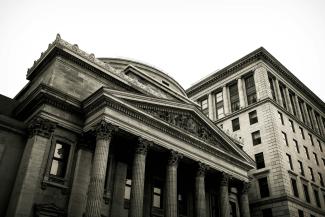
Balancing the Economy: How the Fed Uses Interest Rates as its Thermostat
The Federal Reserve, or the Fed for short, is like the thermostat controller for the U.S. economy. Just like you'd adjust a thermostat to keep your home comfortable, the Fed adjusts interest rates to keep the economy running smoothly.
- The Decision-Making Process
Meetings: The Fed has a team called the Federal Open Market Committee (FOMC), which meets regularly to discuss the economy's health. Imagine this as a group of doctors checking up on a patient.
Data Analysis: They look at a bunch of economic health indicators like job numbers, inflation (how prices are rising), and how much everyone is spending or saving.
Debate: They talk it out, debating what the economy needs to stay balanced. It's like deciding whether to turn the heat up because it's cold or to open a window because it's too warm.
- Economic Indicators and Policy Goals
Inflation: They keep an eye on prices. If prices rise too fast (high inflation), your money buys less. If prices fall (deflation), businesses might struggle. The Fed aims for just right, which they define as 2% inflation.
Growth: They want the economy to grow steadily. Too fast, and it might overheat (like a car engine running too hard). Too slow, and it might stall.
- Adjusting Interest Rates
Lowering Rates: Imagine you're more likely to take a loan for a new bike if it's cheaper to borrow money. When the Fed lowers rates, borrowing becomes cheaper for everyone—businesses and people. This encourages spending and investment, heating up the economy.
Raising Rates: Now, if loans become more expensive, you might think twice before buying that bike. By raising rates, the Fed makes borrowing more expensive, cooling down spending and investment to prevent the economy from overheating.
- Impact on the Economy
Lower Rates: Can lead to more jobs and spending but risk higher inflation if overdone.
Higher Rates: Can slow down inflation but risk slowing down the economy too much, potentially leading to job losses.
In conclusion, the Fed adjusts interest rates to manage inflation and keep the economy growing at a healthy pace, striving for a balance that promotes steady growth and full employment. It's a delicate balance, like adjusting a thermostat or balancing a seesaw, requiring constant attention and fine-tuning.
Disclosure: The information provided in this blog post is for educational and informational purposes only and should not be construed as financial advice. While we strive to present accurate and up-to-date information, the financial, tax, and legal landscape is subject to change, and individual circumstances vary. Readers are encouraged to consult with a qualified financial advisor or professional before making any financial decisions or implementing strategies discussed in this post. Our firm does not guarantee the accuracy, completeness, or suitability of the information provided, and we disclaim any liability for any direct or indirect damages arising from the use of this information. Past performance is not indicative of future results. Any investment involves risk, and individuals should carefully consider their financial situation and risk tolerance before making any investment decisions.

